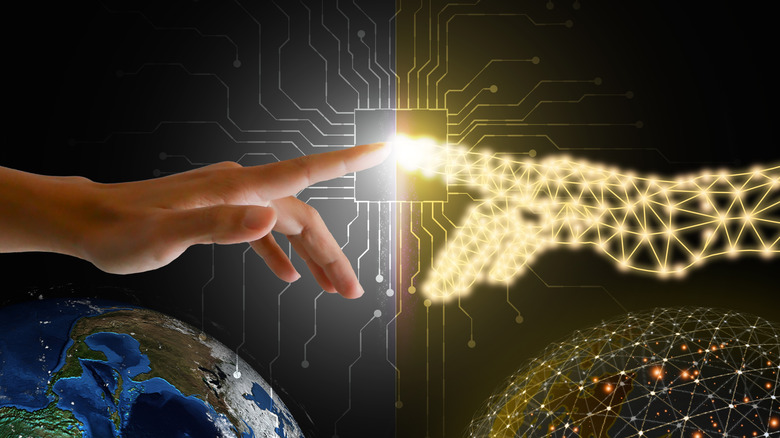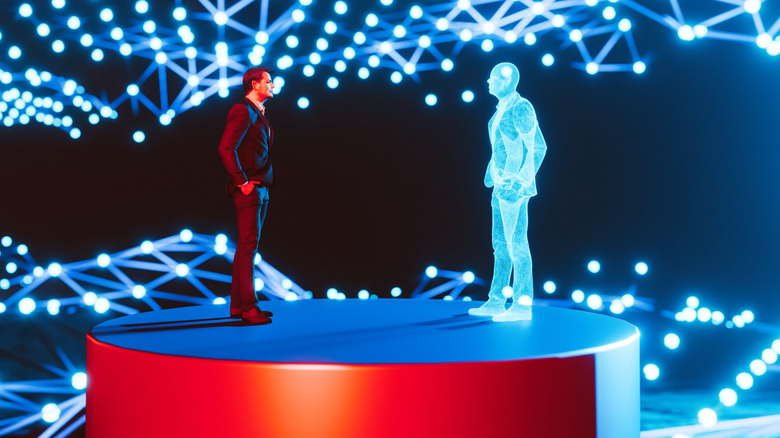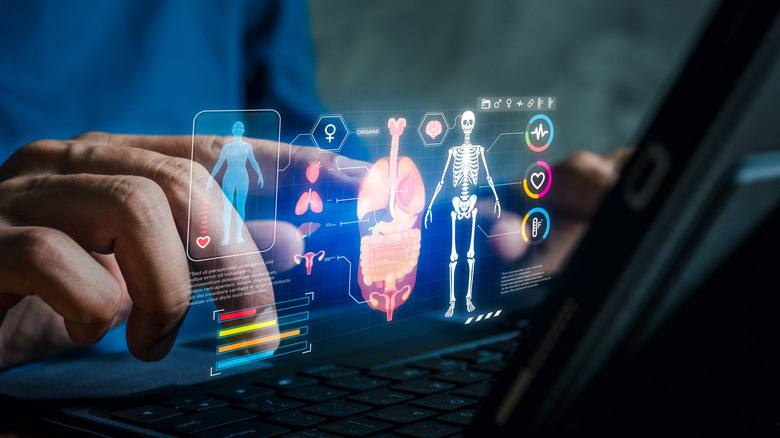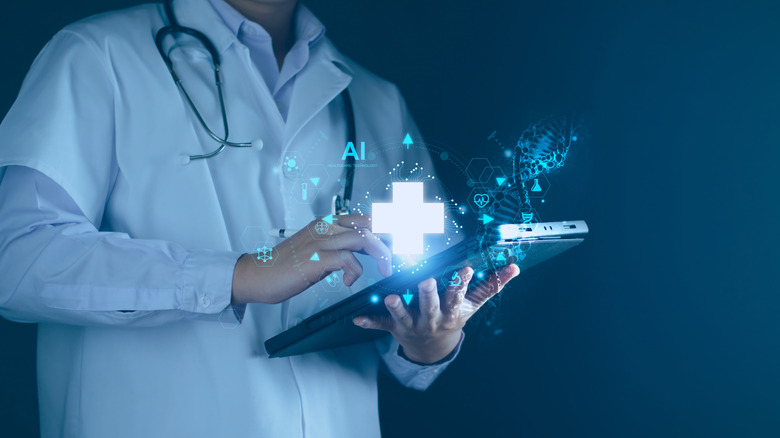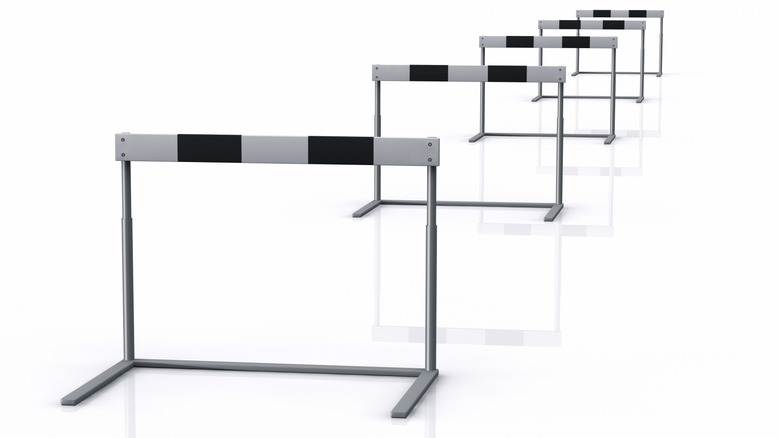Digital Twins Explained: How This Groundbreaking Tech Could Predict Health Risks Early
When the Apollo 13 spacecraft embarked on its lunar landing mission on April 11, 1970, the concept of a digital twin was yet to be conceived. Three days into the journey, the mission took an unexpected turn when a routine stirring of the oxygen tanks on board led to a catastrophic explosion.
After running some diagnostic tests, the NASA team discovered that an oxygen tank explosion had critically damaged an engine. Worse, the damaged spacecraft was venting precious oxygen into space, spelling likely doom for the astronauts onboard — Jim Lovell, Fred Haise, and Jack Swigert. The spacecraft was over 200,000 miles from Earth, well beyond the reach of any terrestrial or physical intervention. The diagnosis and repair of the damage would have to be accomplished solely with what the crew had on board.
NASA had fifteen simulators used for training and mission planning. While rudimentary compared to NASA's latest simulators built by Boeing, they could be connected by up to 10 digital computers and the setup was the cutting edge of technology in 1970. It also had command module pilot Ken Mattingly, who had been replaced on the mission due to exposure to rubella. Mattingly, the backup crew, and hundreds of NASA engineers took to the simulators to replicate the conditions aboard. Running several hypothetical missions, many of which resulted in fatalities for the simulated crew, the team managed to bring Apollo 13 back to Earth safely.
It wouldn't be until 2005 that what NASA accomplished with the simulators received a name — the digital twin (DT) concept.
What is a digital twin?
In the early 2000s, Dr. Michael Grieves, a research scientist and expert in product development, coined a term for what NASA did with its simulators, but with added technology. Using a virtual twin of a product would mirror the actual product in all respects. A digital twin of physical reality could be invaluable in predicting, troubleshooting, or solving problems without the cost or risk of altering a process or product.
The exponential growth of computing power, artificial intelligence, and the Internet of Things (IoT) in the 21st century has exploded the digital twin concept. The IoT enables the transfer of data between the physical counterpart and the digital twin in real-time, has significantly enhanced the functionality of digital twins.
Creating an exactingly accurate virtual simulation has become commonplace. A home computer simulates the performance characteristics of advanced aircraft or automobiles. Pilots train in simulators that mimic real-world situations without risk to life or limb. NASA can control physical systems aboard distant craft. A global shipping operation can determine the impact of a change to its logistical chain without risking doing so in the real world.
A virtual twin goes beyond simulation by incorporating the IoT to transfer data between the physical counterpart of the digital twin in real-time. A true digital twin must meet three criteria – perfectly represent a physical system, share data instantaneously as well as constantly, and behave realistically.
This concept is on the verge of revolutionizing healthcare, with potential applications ranging from patient monitoring and personalized treatment to drug development and surgical simulations.
Static, shadow, and intelligent twins
To say the digital world has changed since Dr. Grieves helped popularize the digital twin terminology in 2005 would be an understatement. Technology that was unimaginable during the Apollo 13 crisis has helped industries, universities, and think tanks evolve the digital twin concept.
The first iteration of the concept during the Apollo 13 crisis would be considered a static twin model, which is an exact digital copy of a physical system. The systems employed by NASA replicated the conditions on board Apollo without the ability to physically alter or share information with the craft. A shadow digital twin can exchange data in real time and apply the information to update the model. This requires a connection between the virtual and physical twin — not possible in 1970 but commonplace now, thanks to the advent of communication technology.
The ultimate goal is an intelligent virtual twin. An intelligent virtual twin can not only synthesize and share data like a shadow twin but also use artificial intelligence to learn, reason, predict, and communicate with the physical twin, including receiving updated information from the physical twin. Virtual twins can be understood through the lens of simulation, but the reality is that an intelligent virtual twin is magnitudes more sophisticated. It creates a link between a physical reality and a virtual world that can predict problems and apply solutions.
Creating a digital twin
The term conjures thoughts of an identical twin living somewhere in the virtual world as a canary-in-the-coal-mine avatar. Introduce a change in the virtual twin, such as virtual illness and a course (or several courses) of treatment, observe the outcome, and use that information to take the best possible route in treating the physical form. Of course, creating a digital twin of something as complex as a biological structure is no simple task. Vast quantities of data must be gathered and utilized to make an identical virtual twin. Fortunately (or perhaps not, depending on your viewpoint), that data has become more and more accessible in recent years.
The IoT has the means to gather and share enormous amounts of data, much of which can be used to create a digital twin. However, it's not just collecting biometric, demographic, and lifestyle data. An effective digital twin incorporates disease registries in addition to genomics (genome mapping), biomics (the study and extraction of large sets of biological data), proteomics (study of interactions and structure of proteins), and metabolomics (study of metabolites) to gain a greater understanding of the health issue at hand.
The growing power of computing and the rising efficacy of artificial intelligence have opened the gates for virtual twinning wider than could have been imagined just a few years ago.
Predicting health risks
By collecting, synthesizing, and monitoring an individual's vital, genetic, lifestyle, and physiological information them using a virtual twin to apply machine learning, predictive mathematical models, and artificial intelligence, a doctor could, in a sense, predict the future.
One of the most enticing facets of applying digital twins to healthcare is the detection of health risks before they emerge. Imagine a world where a doctor could identify and develop a successful treatment for breast cancer well before any signs or symptoms present. The technology could save or extend millions of lives.
Diagnostic technology and methods already do this to some degree. When developing a treatment, most doctors and surgeons generate an exhaustive patient history, including past habits, vital statistics, and family history. A digital twin would maximize this process.
A patient forewarned by an intelligent digital twin model could take unprecedented ownership of his or her health. Best practices for remaining healthy, such as the vagaries of clean eating and plentiful exercise, could be laser-focused to maximize positive outcomes. A virtual twin may discover a patient's genetic predisposition to form kidney stones, allowing the physical patient to avoid the cause before the first agonizing occurrence.
Application of digital twin technology in healthcare
While digital twinning has been used across industries for years, it is still relatively young in healthcare. What, after all, is more complex than the human body and its myriad systems? Aided by the rise of AI and increasingly available health information, doctors and scientists have scored some successes in the healthcare field.
In 2019, a team at Johns Hopkins University published a proof-of-concept study authored by Natalia Trayanova, a professor of biomedical engineering. The report detailed how her team created virtual twins of the upper chambers of the hearts of 10 patients suffering atrial fibrillation (irregular heartbeat). Using information derived from the virtual twin, the team predicted where surgeons would need to destroy diseased heart tissue without exposing the patient to expensive or dangerous procedures.
Another success comes from the Cleveland Clinic, which used the virtual twin model to study the impact of the environment on health. Using health records, environmental characteristics, and publicly available data to model neighborhoods and inform insurance and medical companies on how to alleviate health issues in those communities best.
The purview of digital twinning in healthcare is extensive. It could shift everything from drug delivery to personalized care to insurance premiums and everything in between. However, it is not all smooth sailing for digital twins, as experts say that institutional support is required to push the science forward.
Federal support for digital twins
The concept of digital twin models for use in healthcare has enormous potential but also faces great challenges. As Karen Willcox told the National Academies, "Digital twins have great promise in bringing value across areas of science and technology, including engineering, the natural world, and medicine. Our report makes clear that there is a real opportunity here to bring together domains and disciplines in new, valuable ways, but to achieve that value requires investment in interdisciplinary foundations."
Creating digital twins relies on the sharing of data and enormous computational power, both of which are sometimes unavailable to researchers. Proponents have implored federal agencies, including the National Institutes of Health (NIH), the National Science Foundation (NSF), and the Departments of Defense and Energy, to create interagency channels to promote the research required to maximize the effectiveness of digital twin technology.
Along with the Food and Drug Administration (FDA), the NIH and NSF have awarded $6 million to develop digital twins for healthcare and biomedical research. It's a paltry sum compared to the $285 million offered by the Biden administration to further digital twin technology in the manufacture of semiconductors.
Hurdles
The adopters and adapters of virtual twin technology in healthcare face several challenges, including technical limitations, the quality of available data, and ethical concerns. Incorporating a new and revolutionary concept like virtual twinning across the entire healthcare field will require a monumental, concerted effort. Combining computation, artificial intelligence, mathematical models, and medicine into a neat package accessible and applicable across medical disciplines will require enormous investment and a highly sophisticated technical infrastructure.
Furthermore, while the harvesting of data via smartphones, wearable sensor technology such as the Peloton heart rate band or the Facebit face mask, and other means has become commonplace, the quality of that data, primarily gathered through private concerns, could be faulty. It also raises ethical concerns. In addition, the cost of creating a virtual twin could create a disparity between those who can access the technology because of socio-economic status and those who cannot — a conversation that has been swirling around the American healthcare community for some time.
Another hot-button issue highlights concerns over a person's personal data privacy. If private companies gather information about every aspect of a person's physical being, right down to home life and genome information, could that data be applied unethically? Could insurance companies deny coverage based on a digital twin's predicted ailments? The car industry is already collecting driving data for insurance companies. A logistics operation or automobile's digital twin is far more impersonal than a living, breathing human being distilled into data.
Into the future
The advent of digital twin technology has improved systems for decades, but its application to healthcare has enormous potential and some sticky ethical and moral questions. As scientists and researchers forge onward, one thing seems clear — digital twins are here to stay.
Forbes reports, "By 2025, 25% of Healthcare Delivery Organizations will include formalized digital twin initiatives within their digital transformation strategy." This number seems unlikely to shrink anytime soon. With digital twinning in healthcare in its infancy, only time will tell the benefits it might reap in the healthcare industry. Preventive diagnoses are only the tip of the iceberg.
Decades past, a trio of astronauts floated helplessly in orbit, running out of oxygen and facing slim odds of a trip home. By replicating and simulating conditions aboard the craft, a team at NASA used one of the earliest examples of the digital twin concept to save their lives. It appears that this was only the beginning.
